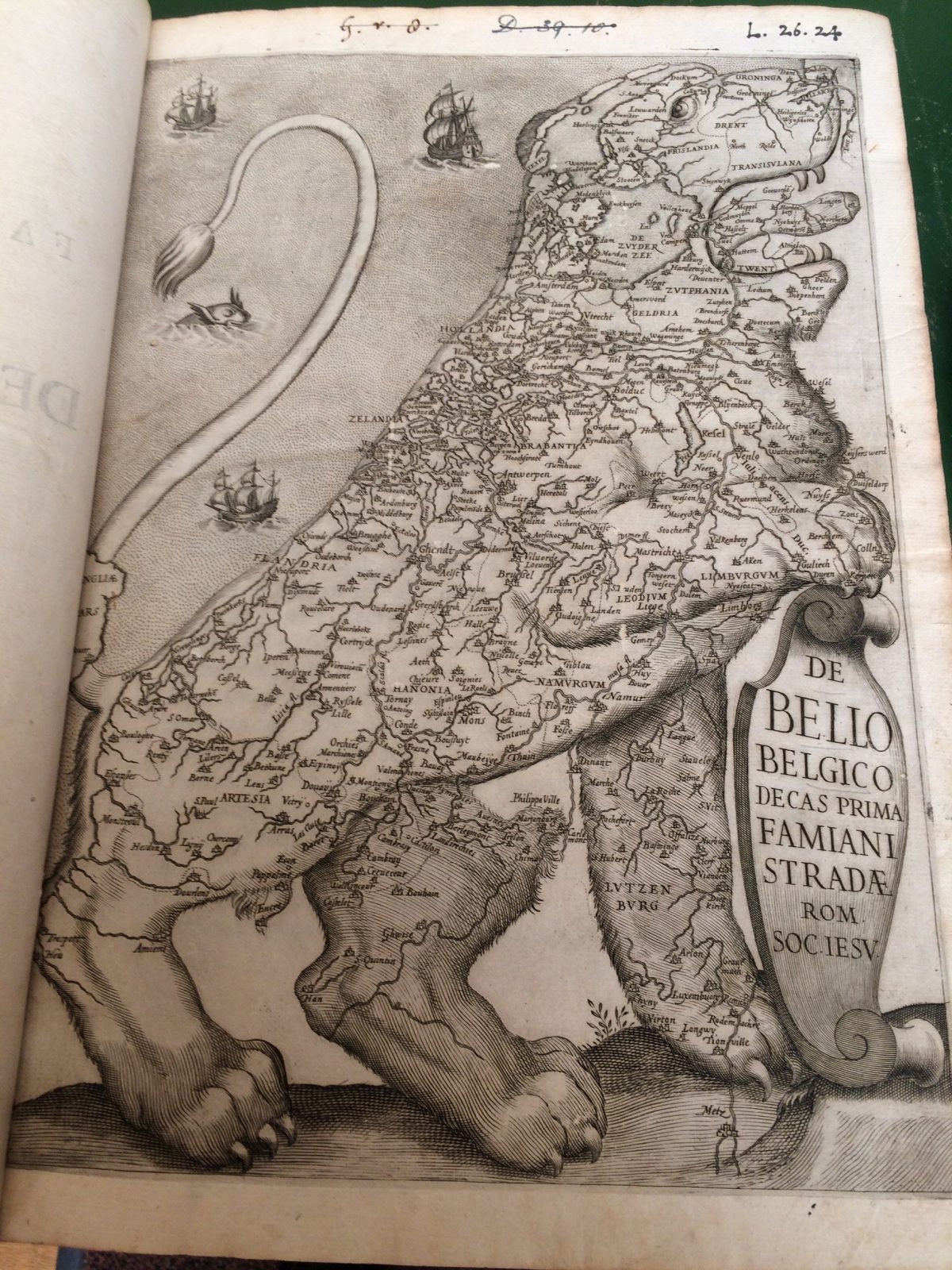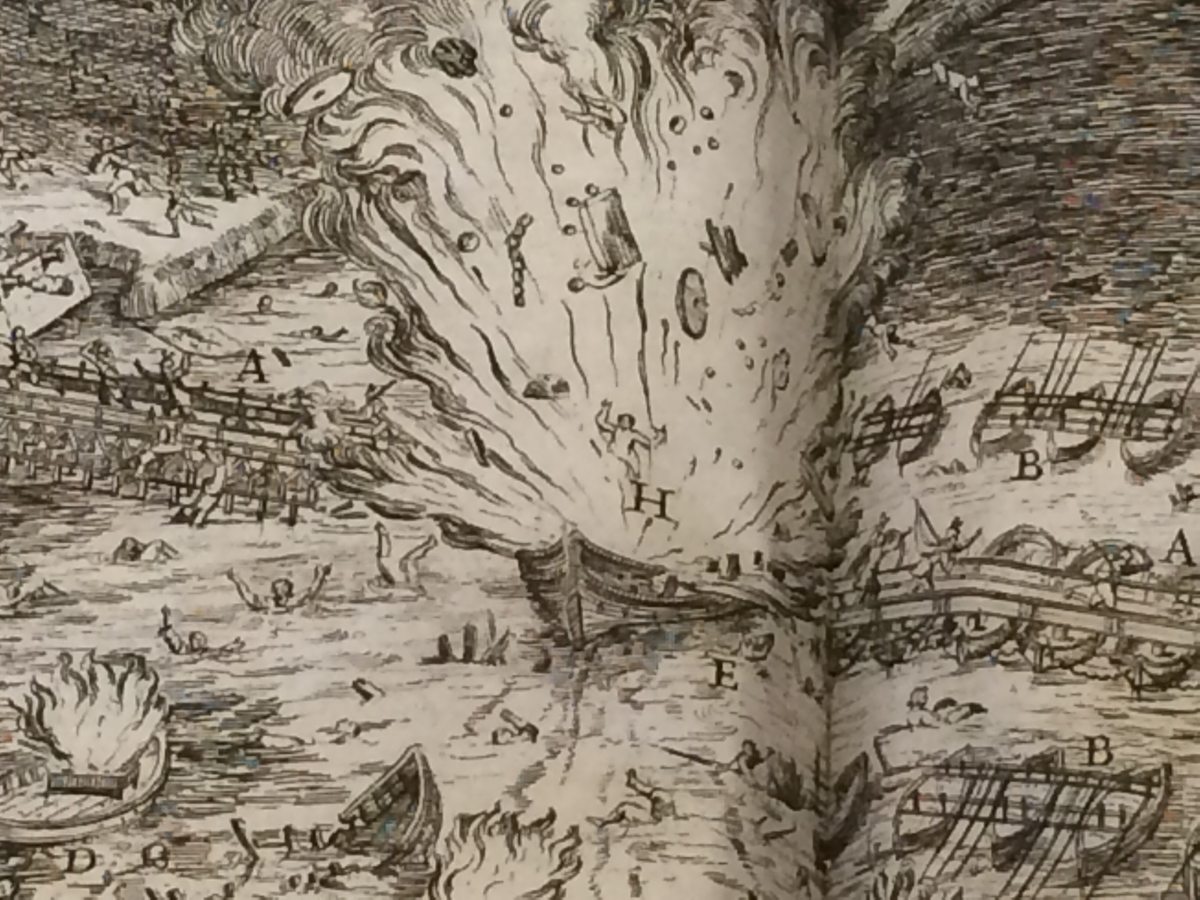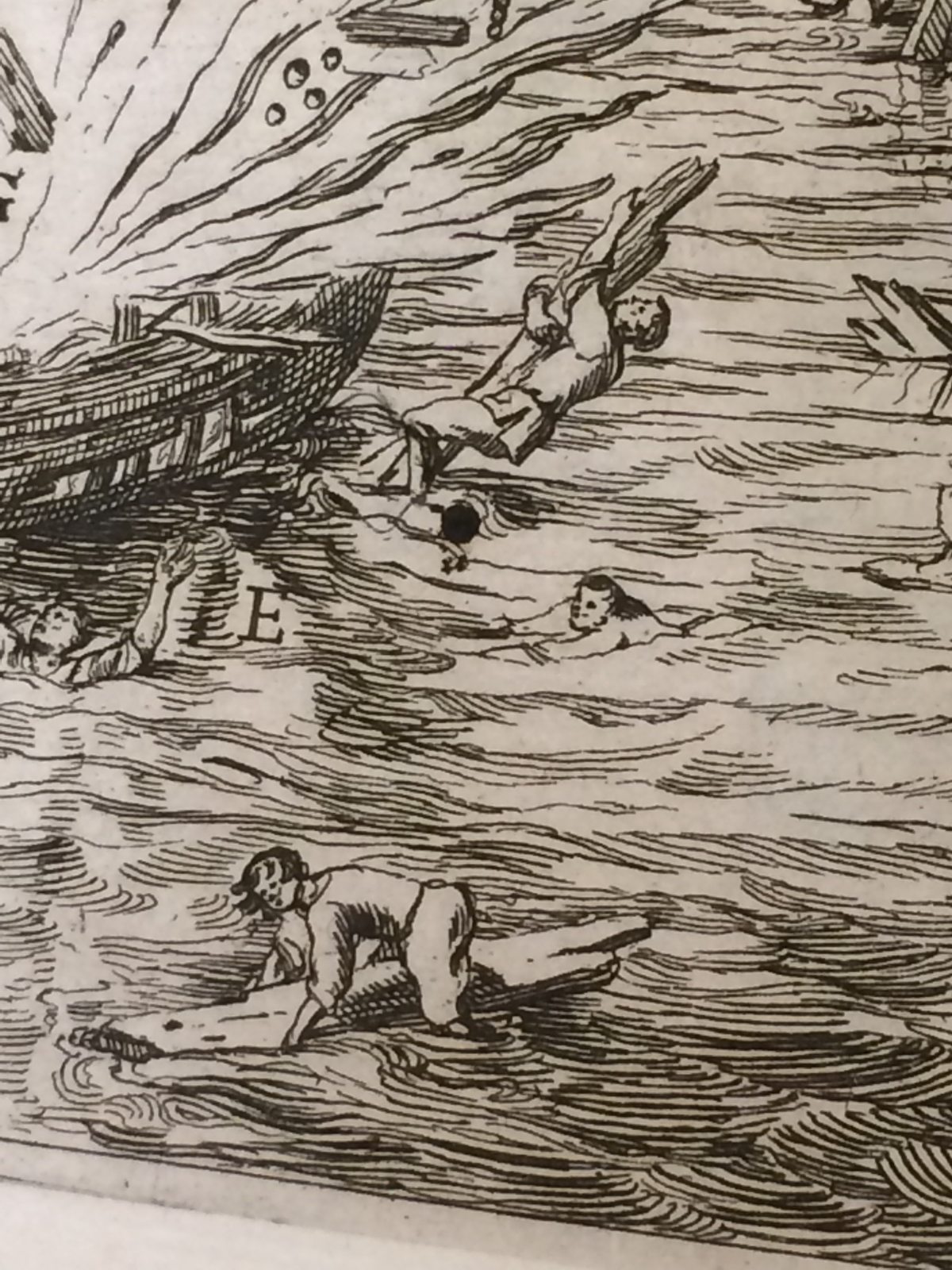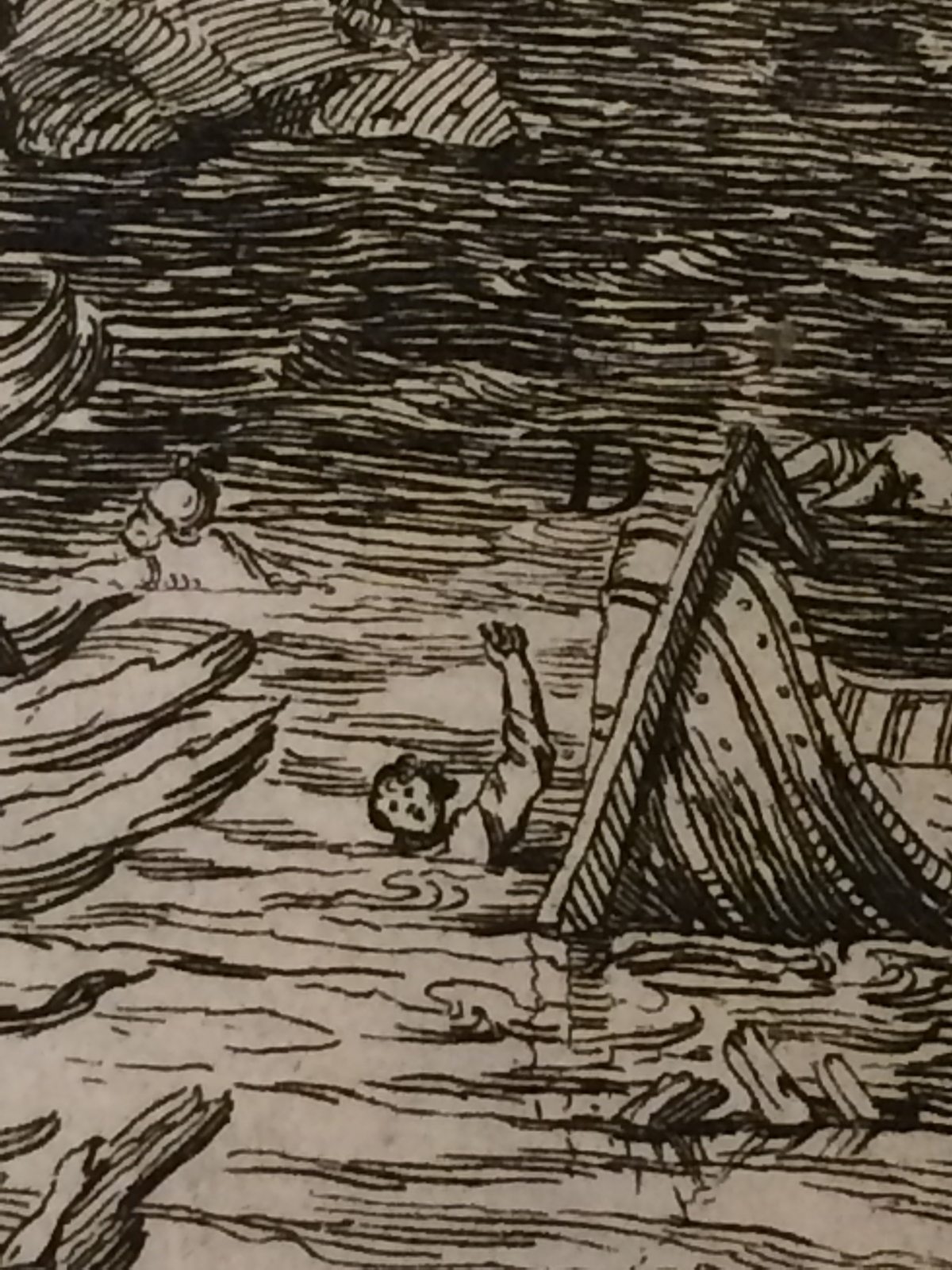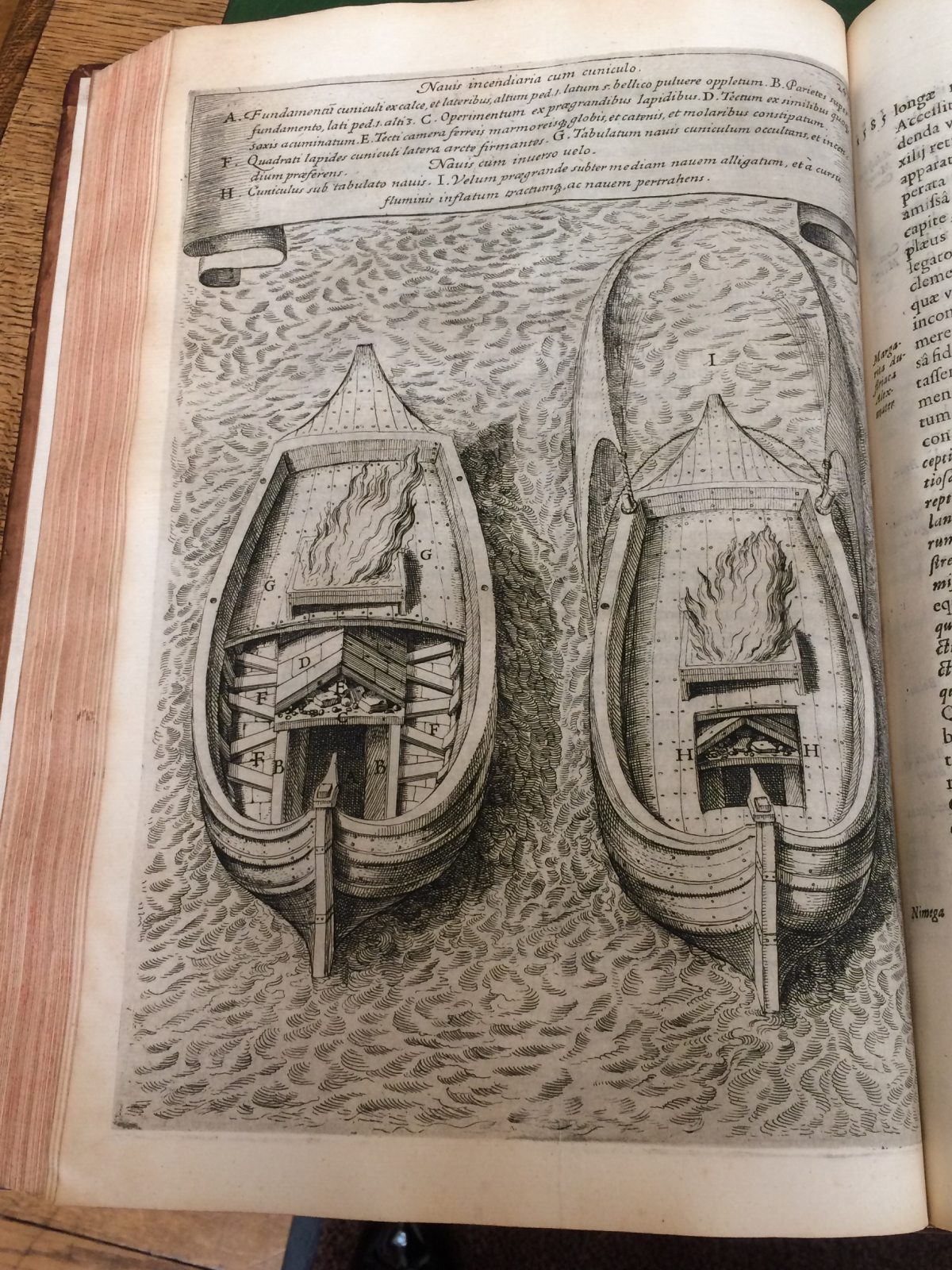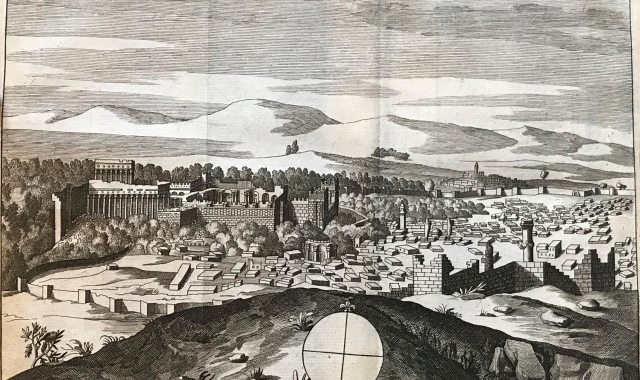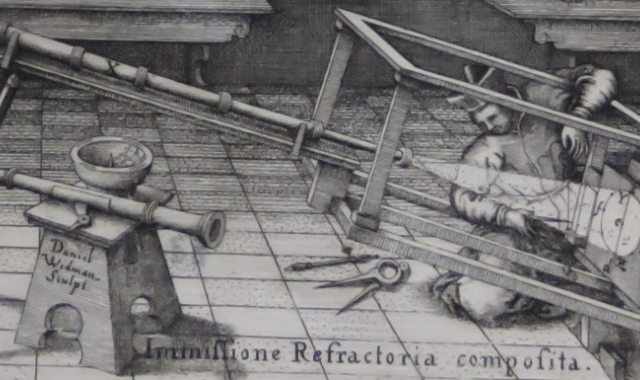Fire in the hole!
De bello Belgico (On the wars of the Low Countries), by Famiano Strada. Printed in Rome by Hermann Scheus, Vitalis Mascardi and Francesco Corbelletti, 1640–1647.
Lower Library, L.26.24–25

Famiano Strada was a Jesuit writer, born in Rome, who taught at the Collegio Romano. This is his two volume historical work in Latin, describing the battles between the Low Countries and Spain in the 16th century. The Dutch revolts were a series of wars for independence from Spain, provoked by, amongst other things, religious persecution, taxation, inquisitions and at times book burnings and the burning of heretics.
The two volumes here presented contain 29 detailed engravings of battles, including a frontispiece map of the region in the shape of a Belgic lion. One of the most impressive of these engravings is that which shows the bridge built by the Prince of Parma across the Scheldt river, during the siege of Antwerp (1584-85). Antwerp was the largest Dutch city at this time and an important cultural and trading centre. The purpose of building this bridge was to create a blockade, cutting the city off from access to the waterways and the sea.
The engraving of the siege shows the Dutch attempt to break the blockade by floating fireships into the bridge to try and break it up. The attempt included the first use of a type of fireship which became known as the 'Hellburner', or 'Antwerp Fire', constructed by the Italian engineer Federigo Giambelli. The main flotilla was certainly made up of conventional fireships, but the two bringing up the rear contained concealed explosives. These last two fireships blew up, throwing people into the river, where you can see them clinging to wreckage or being blown into the air in this graphic representation of the event.
As it turned out, one of the fireships grounded near to the shore and did little damage, but the other did float into the bridge causing considerable damage when its timer ignited the explosives in the hold. About a thousand soldiers were killed when the ship exploded, firing metal, stone and shot over a great distance.
Another engraving shows the components of this Hellburner in great detail. The scroll at the top explains how the ships operated, using a ‘fire-chamber’ containing explosives, with metals and other objects piled on top of the fire-chamber, and a wooden deck over that. The second boat in this engraving appears to have a type of sail at the front which may have helped drag the boat towards its target. The fireships were launched on the ebb tide which would have brought them in the direction of the bridge, and the Hellburners would have been guided initially by hand, with the pilots making their escape in skiffs before the explosion.
This attempt by the Dutch to break the blockade, failed largely due to the Spanish who held the nearby forts, holding the fireships off with pikes, but also due to the fact that the Dutch did not realise that the attempt had been successful and failed to take advantage of the breach. The breach was soon closed and the siege continued.

